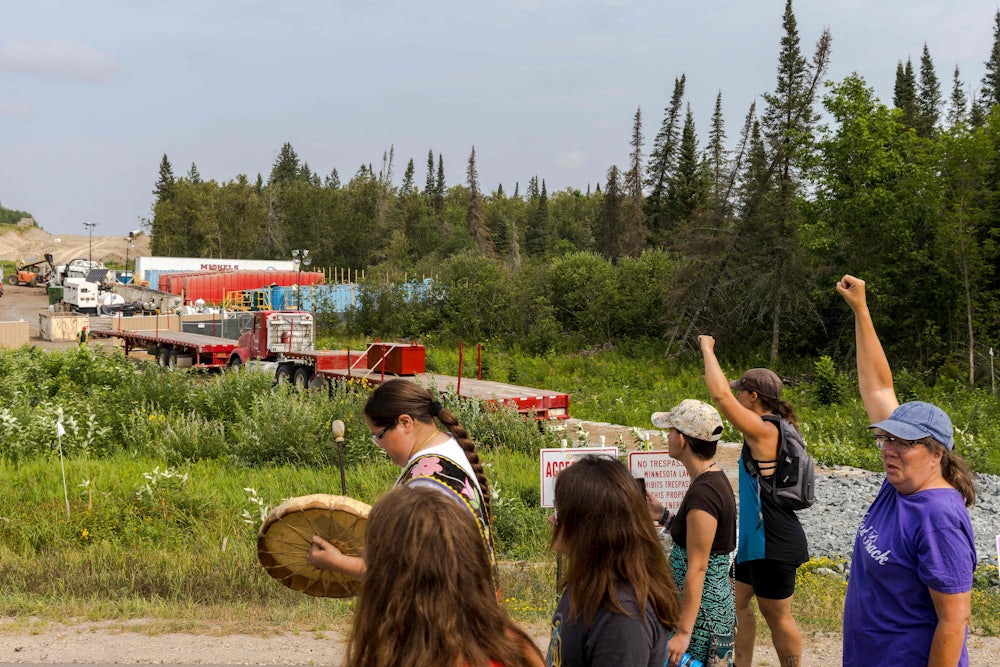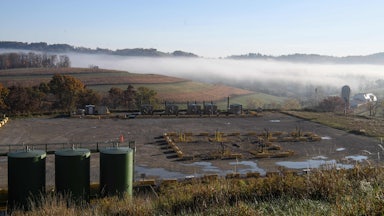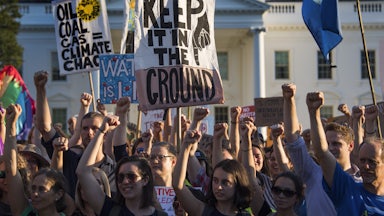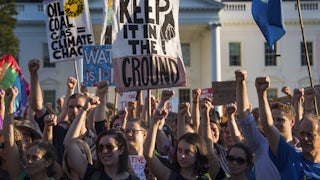“I have nothing against the pipeline; they’ve always been good to the community,” bartender Mary Hesse said, voice rising. “My take is these protesters aren’t from here. They can go back to where they came from, and that includes Jane Fonda!”
I’d come to the D&K Corner Bar in Plummer, Minnesota (pop. 289), to understand how neighbors of the new Line 3 oil pipeline felt watching Canadian energy company Enbridge carve a deep trench all the way across their state this summer. It wasn’t the first time a pipeline had crossed Plummer—the original Line 3 went in 50 years ago. But this new “replacement” project is bigger. It will transport tar sands crude, which is particularly hard to clean up when it spills. And construction this summer coincided with the worst drought in Minnesota since the Dustbowl and a cloak of wildfire smoke from Canada, conditions exacerbated by humans burning fossil fuels in the first place.
Mary had been counting out pull tabs—little cards that look like lottery tickets but operate like mini paper slot machines—for her customers when I arrived. Arlys and Roger Konickson, who were coming up on their fifty-fifth wedding anniversary, and their friend John Zimpel, who had committed 35 years of his life to the Plummer Fire Department, would occasionally slap down a matching card. They told me they didn’t mind losing a little money because the proceeds went to the local Lions Club, which donated heating oil to the town’s churches.
After Mary’s muscular defense of Line 3, John leaned in on his barstool. “When they had a leak, they took care of it,” he said. “They evacuated the whole town and put ’em up in hotels.”
“There was a leak here?” I hadn’t known.
“Yeah, 20 years ago. A guy hit the line with a backhoe,” John said.
“The smell was all over the town, you didn’t know what it was,” said Arlys.
“Oil,” John said. “It just smelled like oil.”
“Are you concerned about another leak?” I asked, mentally tabulating the potential health effects.
“Life’s a risk,” said Arlys. “You drive to Thief River Falls, you could get hit on the way. You can’t worry about everything, or you’d go crazy.”
I sat with dozens of people this summer as they watched segments of pipe trucked in and buried in their backyards. Since then, Arlys’s words and similar sentiments I heard have haunted me: You can’t think too much about this stuff, or you’ll lose your mind.
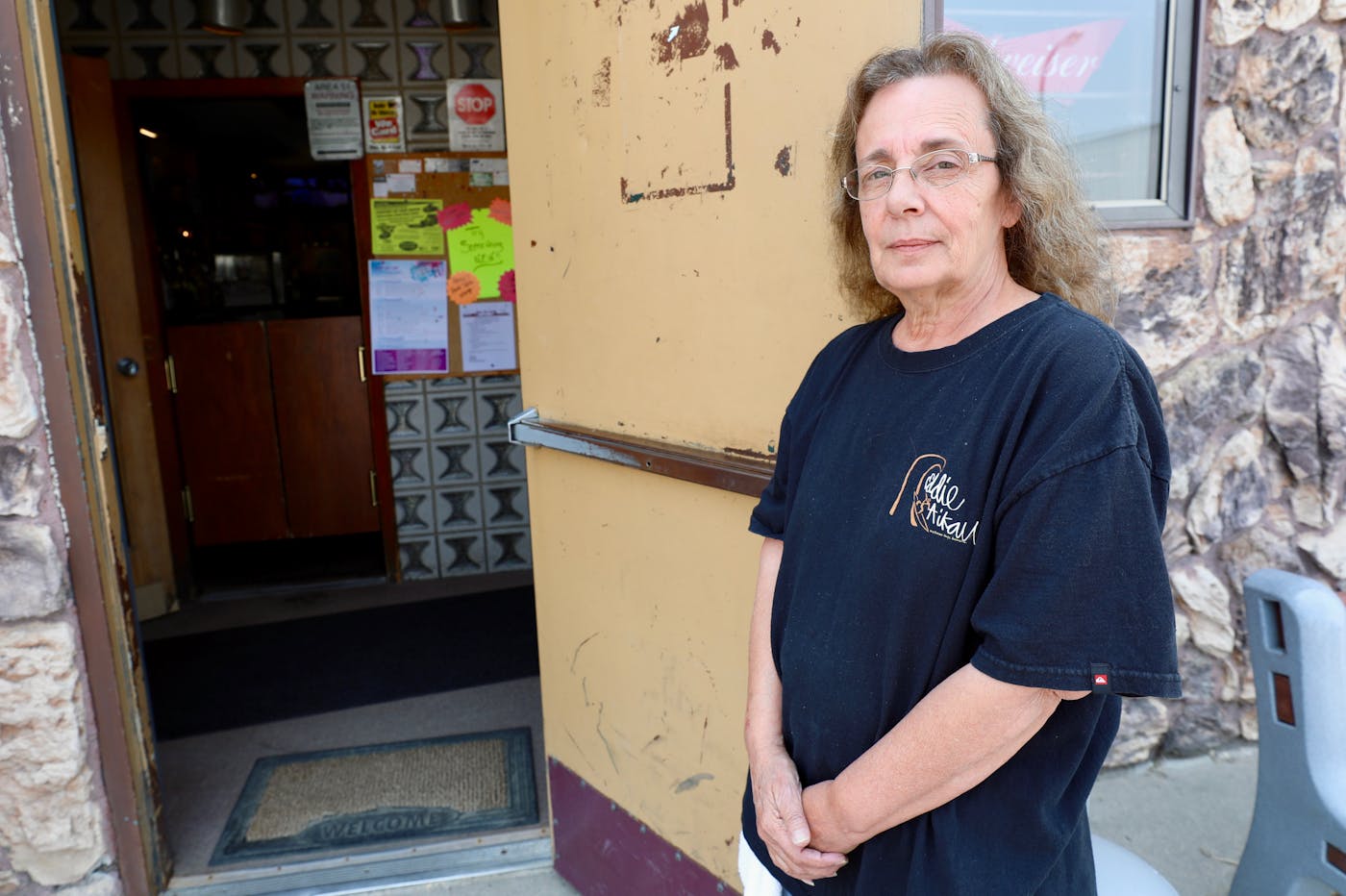
They articulate a common predicament: How are we to stay sanguine and functional day to day as we witness increasingly severe weather and worsening air quality battering the places and people we love? How much responsibility for deathly global systems are we able to shoulder before we’re hijacked by fear that we lack agency in our own time? How do we stay alert, sensitive, and responsive to our environment when our sensors keep getting overloaded by messages of shame and doom?
But I also met Minnesotans who were approaching the issue from another angle: Would acknowledging fear about this new pipeline’s impact really break our brains? Would it kill us? Or would ignoring the risk present the greater threat?
Traveling the 340-mile Minnesota portion of the pipeline, I found clues about what (and who) caused some folks to numb their worries over Line 3 and accept it, while others fought to stop construction. I also noticed that every Minnesotan I spoke with, regardless of coping style or political leanings, was dealing with a sense of loss.
“You know what? Climate change killed my dog,” said Herb Johnson, a bearded 72-year-old who lives alone in a farmhouse his grandfather built by the Red River, the spot where Line 3 enters Minnesota from North Dakota. Just two weeks before I knocked on his door, his dog had stumbled back into the house during a heatwave and suffered a stroke. Johnson reads a lot; he knows what’s causing the heat spikes.
“I told the Enbridge guys, we have to get off oil,” he said. “But it’s like smoking, it’s a nasty habit, and I can’t quite get behind an electric car here in the winter.”
Johnson feels guilty for being a typical American energy consumer. He’s not alone. That “personal responsibility” line of reasoning—you are the emitter, and you deserve more fossil fuel infrastructure because you want a warm house and full tank—has been carefully engineered by fossil fuel companies over decades. Enbridge has been no different. It didn’t sneak this project into communities; it built relationships with Minnesotans, asked for their concerns, and spoke with people about the ongoing need for oil in modern lifestyles, all while sponsoring local charities and Fourth of July celebrations.
Johnson and his neighbor Tanner Samuelson, who sit on the South Red River Township Board, told me that Enbridge was in near-constant communication with the board. The company sent them thick briefing books full of engineering details about how construction would commence just 300 yards from the house where Samuelson lives with his wife and four children.
“When they mobilized, it was incredible, the amount of traffic through here,” Samuelson said. “But Enbridge is extremely accommodating. They want to make sure the town board is pleased, and they voluntarily paid for dust control.”
Enbridge also took out frequent half- and full-page ads in local papers listing reasons why Line 3 benefits the local community. Visiting work crews, its messaging promised, would boost local economies. The company also told the town board that affected farmland (this is sugar beet country) would be buffered from any danger. It held informational Zoom sessions in some communities to answer specific questions about safety protocols.
“They’re doing a good job with this pipeline,” said Johnson. But even bombarded with reassurances, he hasn’t fully bought the company’s messaging: “How necessary it is? That’s up for discussion.”
People in Thief River Falls, Bemidji, and Park Rapids told me they’d asked similar questions at town meetings: With the oil industry starting to tank, is there a significant market demand for Alberta’s hard-to-refine tar sands oil? Will Minnesotans see any economic lift after the visiting construction crews have gone? And why are Americans stuck with a pipeline that profits a Canadian company?
Enbridge spokespeople attended the meetings too, and they leaned on the notion of necessity for now—modern lifestyles and strong economies require this oil until the energy industry transitions to cleaner options; it’s just a matter of how to deliver it best. The (false) choice many Minnesotans felt was on the table was either accepting the new pipeline or having crude oil cross their state on trucks and trains, which Enbridge said was more carbon-emitting and less safe (a logic along the lines of, How do you prefer to be penetrated, by the best hunting knife we can engineer or by crossbow?).
Justin Keezer, a Native American retired firefighter who lives close to the Mississippi Headwaters near Bemidji, wasn’t buying any of those arguments. He’s been a vocal opponent of the new Line 3 all along, even speaking out on local radio. Keezer’s home is a mile away from the original pipeline, which leaked so much, it was designated a national crude oil spill research site.
He feels gutted and disgusted by this new project. “Would you let somebody hold your mom down and cut her arms and drain the blood out of her? That’s how I look at it,” he said.
Keezer, who just turned 45, is Anishinaabe (also known as Ojibwe), a nation of people who never left the region because they signed treaties with the U.S. government in the mid-1800s that made allowances for land sharing—white settlers could come in as long as the Anishinaabe retained their rights to hunt, fish, and gather wild rice in these wetlands, as they had for centuries. So Keezer has never considered himself a “protester” but, rather, a defender of treaty law and the last nonpolluted rivers, lakes, and streams in the state. He’s part of a Water Protector movement led by Native women, including his cousin Dawn Goodwin, who invited people from all over the world to come to Minnesota for rallies, marches, and direct actions to stop Line 3. More than 800 people have been arrested so far, and videos of those actions document the powerful emotions motivating Water Protectors to risk bodily harm.
“If humans go extinct, at least we went out fighting, but it’s not too late, I think,” said Keezer, as we sat on the railing of a Route 2 bridge watching Enbridge workers pump water out of the Mississippi River to power a drill. “These battles here are the ones we have to win.”
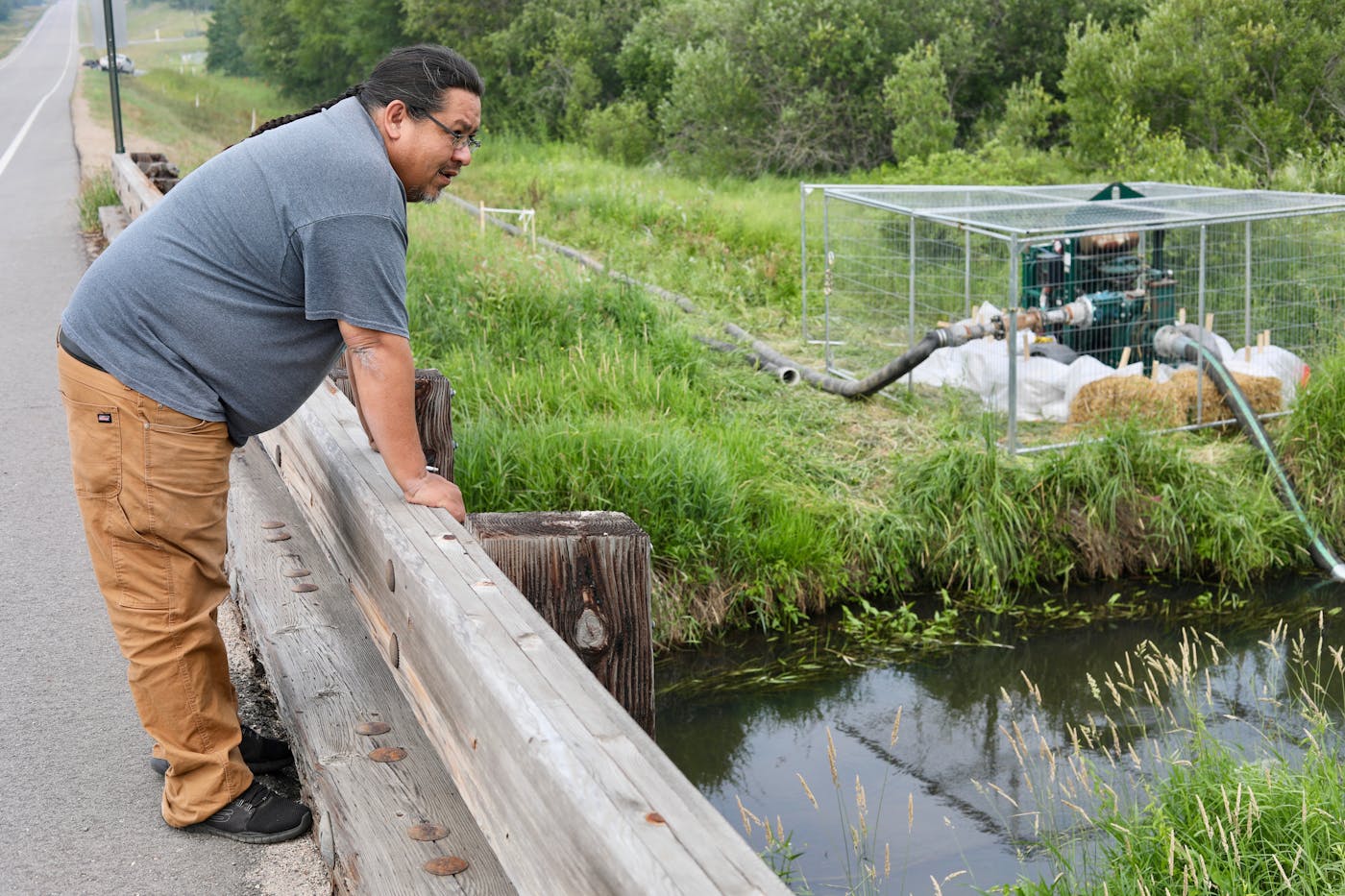
I kept moving south and then east along the line, watching Enbridge teams working their way through vacation lake towns and state forests. It was amazing to contemplate, the company’s feat of securing state and federal permits for more than 200 freshwater crossings.
About two-thirds of the way across the state, I stopped at a woodsy campsite for activists called the Welcome Water Protectors Center. Shanai Matteson is a sixth-generation Minnesotan whose Eastern European ancestors immigrated to work in area iron mines. Ember Rose Phoenix (a ceremonial name, she said), is a herbalist with family in Duluth, where her ancestors settled after escaping enslavement. Both women arrived at the camp to help oppose the pipeline. But they now say they will stay even after construction is over to help model greener ways of living to Minnesotans.
I asked them what it was like to watch neighbors greenlight a pipeline Matteson and Phoenix adamantly opposed—Matteson’s cousin had even sold part of their family land to Enbridge. The two women told me they were trying to understand root causes. Minnesotans felt chained to “a culture of extraction,” they said, because historically, it had been a tough landscape to farm. They also said they think Americans struggle with fear and guilt about how much land and water has been polluted already.
“Shame about what’s happened immobilizes people, especially white people,” said Phoenix. “What we need to say to each other instead is, ‘We all fucked up, it’s not working, and we needed to figure out something else.’”
The activists invited me to wade with them up the Willow River to the site where Enbridge was drilling a pipeline tunnel that day—the river is public land; so as long as we stayed in the water, we weren’t trespassing. We fumigated ourselves head to toe with Deep Woods Off and began a slow, quarter-mile slog through the water, trying not to think about Minnesota’s prolific leech population.
“You can pull ’em right off,” Matteson said.
Pipeline workers in bright neon vests stood along both sides of the river, watching us approach. Phoenix, in a one-piece bathing suit, forged ahead and found a shallow spot where she could sit down in the water. I marveled at how at ease she looked in the midst of that construction scene—grinning, letting her arms float on the river’s surface, chin raised to tree branches arching over her from the riverbanks. I asked her later what she’d been thinking at that moment, and she said, “I acknowledge what you are doing here on this site, I see you, and I can be present with the beauty of what’s around me.”
Phoenix had found a way to feel it all and protect her equanimity, pacing herself for a long fight. She was arrested at a direct action two weeks later.
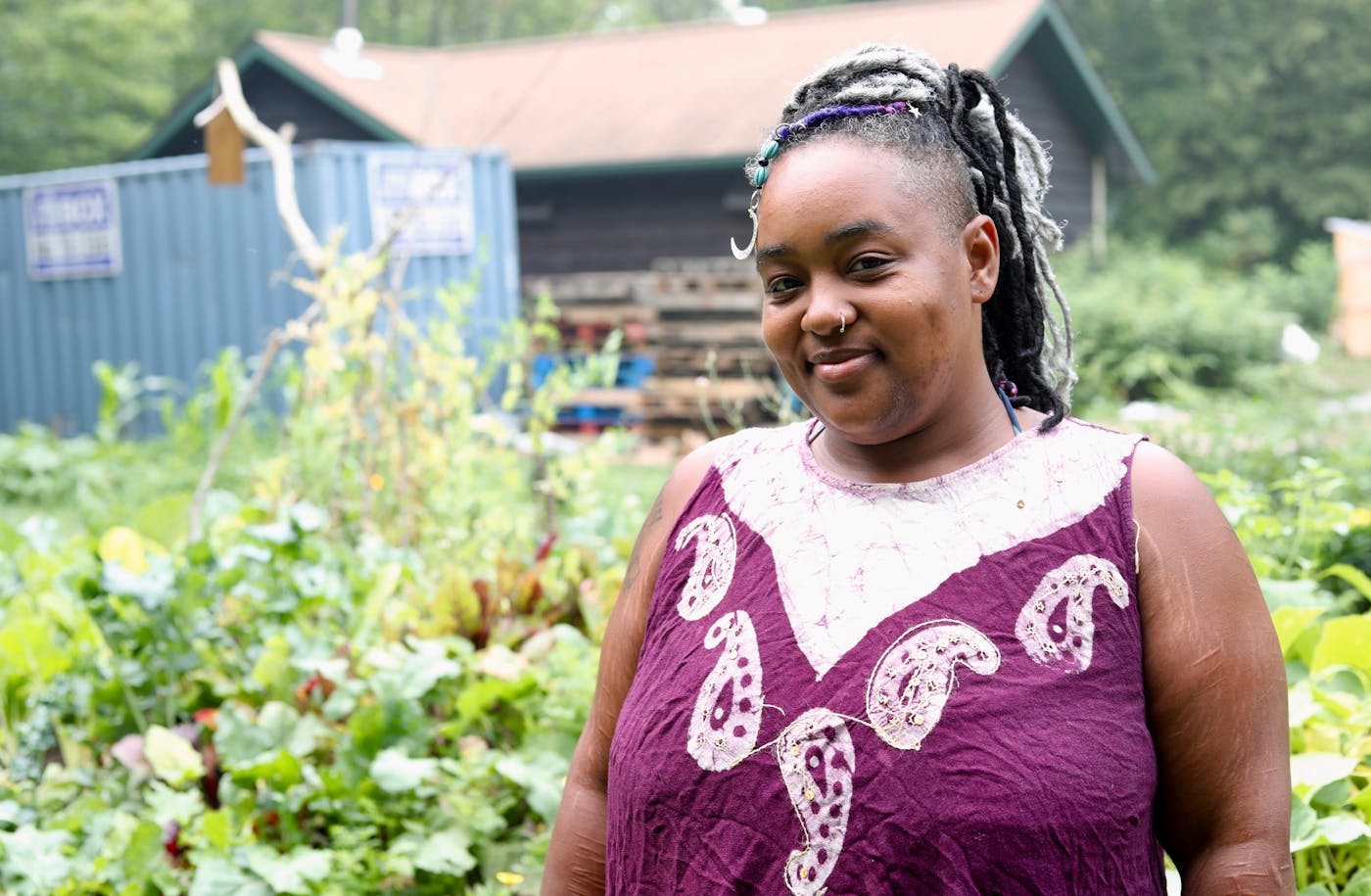
As I tracked the final miles of gashed land to the Minnesota-Wisconsin border, I pulled over near Scott’s Corner to watch crews lower a segment of pipe into the earth. The pipe was aboveground one minute and deep in Minnesota soil the next. Not an inevitable action. Instead, one of countless little junctures of cause and effect that might have been interrupted had more people—and not just Minnesotans—allowed themselves to feel troubled enough to prioritize an alternative to a Canadian oil transport company expanding its short-term earnings potential in 2021.
Enbridge is currently finishing up construction and has said in filings it could begin pushing crude oil through Line 3 any day. In mid-September, the Minnesota Department of Natural Resources fined Enbridge $3.3 million for piercing an off-limits underground aquifer during construction and failing to follow the environmental safeguards in its permits.
Minnesotans are now stuck with scarred lands hosting a new pipeline that’s already damaging their wetlands. And when the oil begins flowing, all of us will be stuck with the eventual carbon emissions of more than 750,000 barrels a day, the equivalent of firing up 50 new coal plants. This in a year in which climate scientists are begging humans to ease up on the throttle. The same year wildfires endangered air quality from Oregon to Pennsylvania, heat waves killed hundreds across the Pacific Northwest, Gulf waters strengthened a hurricane too quickly for humans to evacuate, crops from wheat to tomatoes dwindled in drought, and New Yorkers drowned in their basements.
Notice whether you’re overwhelmed by all of this—tempted to numb out. No one I spoke with this summer was truly apathetic: Frustration or grief could be suppressed by a sense of inevitability but not erased.
We’re all together at this emotional edge, including President Biden, who can stop Line 3 right now with a single executive order revoking its permit. He’s had that power since Inauguration Day. Would that be “crazy”? Feeling so worried about humanity on this fast-heating planet that you shut down a multibillion-dollar fossil fuel project nearing completion? Or would it be the most galvanizing, wildly sane thing a person in power could do? What I observed in Minnesota is that feelings of loss and violation are not the end of us, they’re the depths, often unearthing the courage needed to protect all that’s left.
